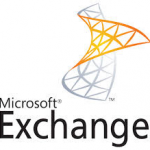The Office 365 offering from Microsoft has caused a new technology changeover from the previous on premise mentality within the SMB market and even Enterprise level IT has been adopting the technology. The promise of large mailbox quotas and the software vendor providing and supporting the solution seems like a dream offering, but is it?
The Hosted exchange market has been in a price and mailbox quota size war for some time prior to the release of Office 365 Hosted Exchange and at the end of the day they all face similar issues:
- Data centre hosting costs have increased (mainly due to power prices)
- Microsoft licencing has increased in price in relation to exchange per user licencing (this one subject is debatable that it has had any effect on Office 365 Hosted Exchange but it certainly has had a large impact on the rest of the Hosted Exchange market)
- Technology mainly hardware has enabled the market to absorb some of the costs in relation to this; however, the increase in quotas has also had to be absorbed into the savings. Exchange technology itself has enabled a change in hard drive technology to be used. With a lot of vendors now able to use slower larger drives and offer larger mailboxes due to the software developments of Exchange 2010 and 2013. Many of the core Email filtering technologies in use for SPAM and Virus technology have also been in a very much price based market shuffle that has led to a general trend of static or reduced prices which has helped minimise the overall cost per user.
So in a market place that seems to be focusing on price what is being lost from a functionality point of view, after all there is always a catch?
Let’s start first with a few basics about email:
Mailbox Sizes:
 If a customer has a 50GB mailbox and that mailbox has to be uploaded into the cloud, it needs to be uploaded via the internet. This sounds obvious but what if you had 100 x 50GB mailboxes, the logistics of this move start to become a lot harder to manage. Still, I am sure that it would happen and get provisioned in the end but it would just take a long time and get completed and everyone would forget that this was a pain.
If a customer has a 50GB mailbox and that mailbox has to be uploaded into the cloud, it needs to be uploaded via the internet. This sounds obvious but what if you had 100 x 50GB mailboxes, the logistics of this move start to become a lot harder to manage. Still, I am sure that it would happen and get provisioned in the end but it would just take a long time and get completed and everyone would forget that this was a pain.
What if you need to change suppliers as the current supplier turns out to be offering a poor service? No offense to Microsoft but they do have a history of offering poor technical support! Well you are in an awful situation of downloading and re-uploading. Then what if in-between the time you went live and the time you wanted to move the mailboxes your were now allocated to be 100GB in size, you are now starting to get to a point of being locked in to a supplier due to the amount of time, effort and cost of migrating from one provider to another.
So I ask you: Is having a huge mailbox quota a good thing?
Lets now talk about how end users use mailboxes. Take the classic user with 3 folders, never deletes anything in the Inbox, sent items and deleted items all used as filing cabinets with no sub folders. Searching 10-50GB of email in a single folder using Outlook is not a very sensible idea, mailbox fragmentation becomes more of an issue and the mailbox becomes slower and slower over time.
Connectivity to the users mailbox starts to become a larger and larger issue with the size of the mailbox, RPC over HTTP even on header only synchronisation starts to struggle due to the shear volume in size of the mailbox and the number of messages it needs to synchronise. This problem gets worse as the mailbox gets larger. The amount of local disk storage required upon the local machine or terminal server becomes an issue as well moving forward to enable the cached mode functionality (offline mode) of the mailbox creating capacity issues upon the client network. This is why house keeping mailboxes within Enterprise IT has always been a sensible thing to do to get the best value from the resources available rather then just throwing resource and money at the issue to make it disappear. For a while or so I would argue large mailboxes encourage bad work practices that ultimately lead to support issues and increased infrastructure costs upon the client network.
Mailbox Backups:
 Did you know Office 365 does not offer any mailbox restore functionality at all?
Did you know Office 365 does not offer any mailbox restore functionality at all?
You cannot request that a mailbox be restored from a point in time to a PST for instance. Let’s use the classic scenario of an employee that clears their mailbox down before handing in their notice. You get support to export their mailbox to PST the day they leave and when you go to open the PST you find that the ex-employee deleted everything over 14 days ago so you ask IT support to restore the mailbox from a backup and in the Office 365 world: the response is sorry we cannot do this!
What does it offer instead?
- 365 offers a standard 14 days deleted item retention period accessible from outlook (most hosted exchange providers offer the same 14-30 days being the norms) The end user has access to this and can also clear this area as well. Within Office 365 this is adjustable to 30 days as a maximum.
- Then the email is sent to a purge folder that gets cleared after a short period of time.
- If the mailbox is deleted then it is kept for 30 days and can be re-attached to a new users account if needed but the mailbox will not have the email that has been deleted over 14days ago within it, so this is not a restore it is just simply an undelete function for the entire mailbox. (pretty much all Hosted Exchange providers also offer this function on a 14 to 30 day cycle as well)
Further reading from Microsoft: http://help.outlook.com/en-GB/140/hh125820.aspx#retentionperiod
What’s the issue with this I can still get back the email I deleted?
 Yes you can get back an individual email or a group of emails if you deleted by accident and most users would have the sense to report the issue before 14 days has elapsed but it rather avoids the subject of people deleting mail on purpose to remove it from the system that may be required in the future by the business. (The scenario of a sales person emailing all of your clients just before they hand in their notice then purging all of their sent and deleted items)
Yes you can get back an individual email or a group of emails if you deleted by accident and most users would have the sense to report the issue before 14 days has elapsed but it rather avoids the subject of people deleting mail on purpose to remove it from the system that may be required in the future by the business. (The scenario of a sales person emailing all of your clients just before they hand in their notice then purging all of their sent and deleted items)
So to sum up the data backup flaw in the Office 365 model if the user deletes an email and empties the deleted items it is in the deleted item retention area if they clear this as well you maybe able to get it back after a few days then after this it is gone with no way of recovery at all.
Is there another way of thinking as we still want to outsource our email?
A combination of services, maybe using an email archiving solution but the costs keep building up, especially when the services tend to work on a per user basis with an amount of storage allocation for an archiving model or companies such as VirtualTin offer hosted exchange with the ability of custom backup retention periods giving all of the benefits required to offer the service they also allow for custom mailbox sizes and the ability to increase/decrease these limits just like you would within an on premise network thus allowing for your business to continue managing its email requirements without the capital expenditure in delivering the service and the added benefits of elastic computing.










